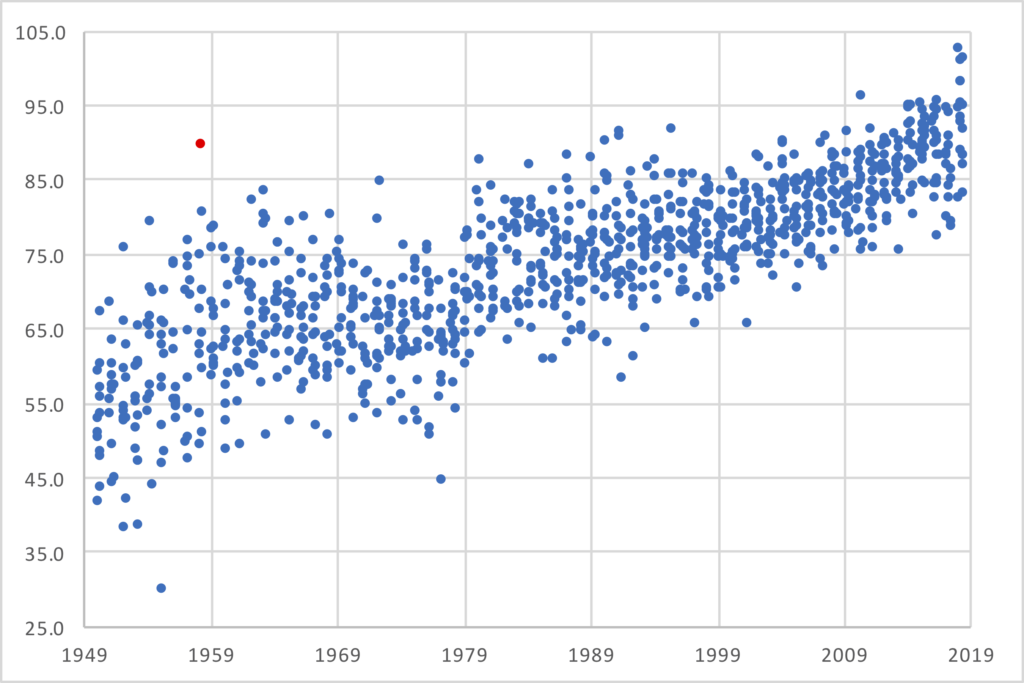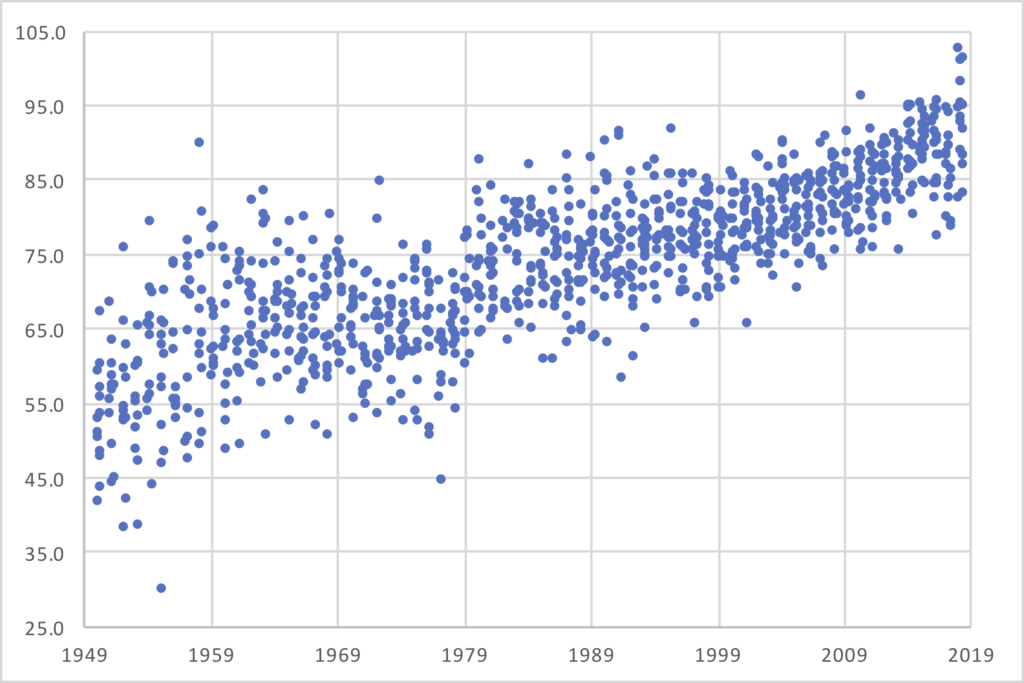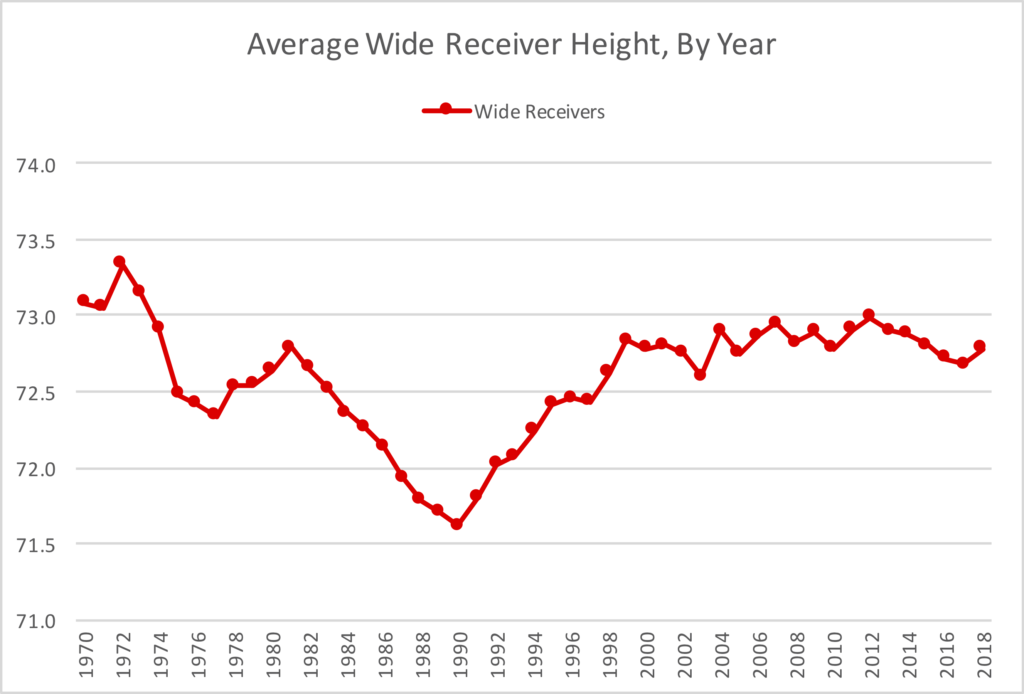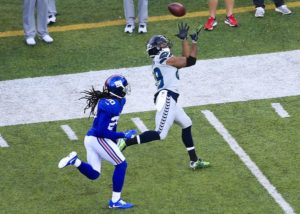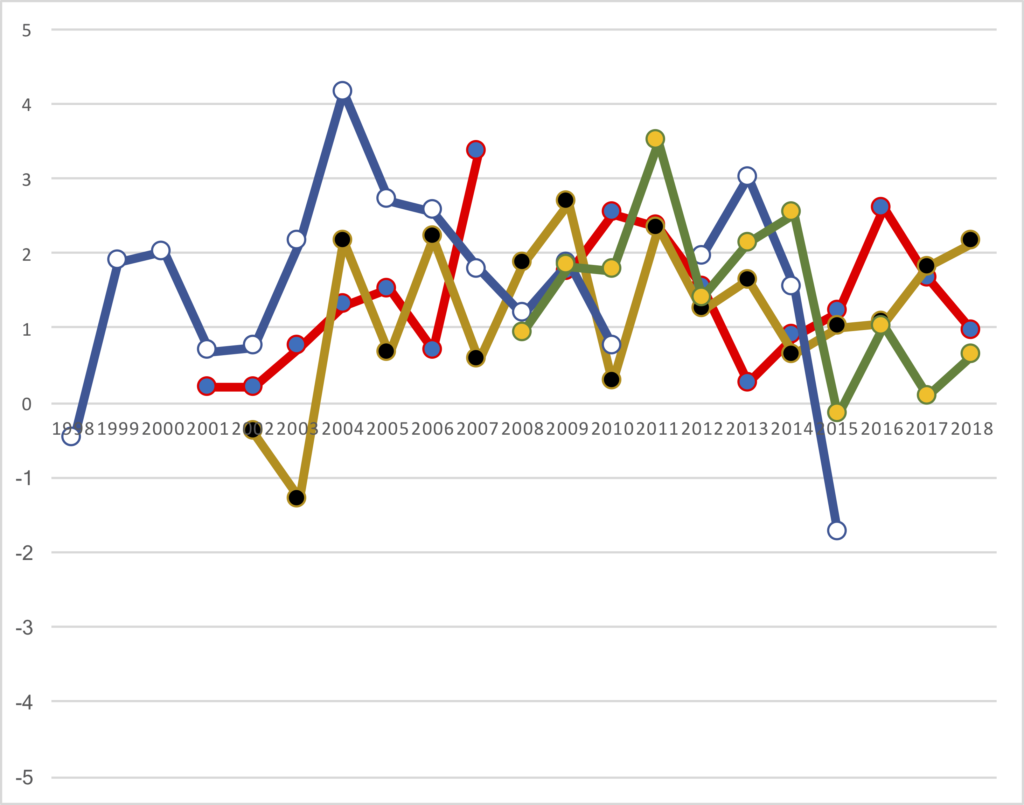Through 9 weeks of the 2018 season, the Bills looked like one of the worst passing teams of the modern era. Buffalo ranked last — by a lot — in most major passing categories.
- Buffalo’s passer rating was 51.5; Arizona ranked 31st at 67.5.
- Buffalo ranked 32nd in Net Yards per Attempt at 4.2; Arizona ranked 31st at 4.9, Cleveland was 30th at 5.2, and every other team was at 5.7 or better.
- Buffalo had 3 TD passes and 16 INTs, by far the worst TD/INT ratio in the league. Arizona had the second-worst at 7 TDs and 10 INTs.
- Buffalo ranked 31st in yards per completion, at just 9.9 (the Colts were at 9.7).
But over the last 8 weeks of the season — and admittedly I am using multiple endpoints here to make a point — things changed significantly. From week 10 through the end of the season, the Bills ranked:
- 28th in passer rating, which while not very good, was a much better 78.0.
- 12th in Net Yards per Attempt, at an above-average 6.6.
- Had a TD/INT ratio of 10/7.
- 1st (!) in yards per completion, at 13.5.
In case it wasn’t obvious by those four numbers, much of the improvement in pass efficiency was driven by Buffalo’s huge jump in yards per completion. And much of that improvement was due to the breakout performance by Robert Foster. The rookie wideout had just two receptions for 30 yards through week 9, but in the team’s final 7 games, he had 25 catches for 511 yards, a 20.4 YPC average. Foster was an undrafted rookie out of Alabama who had just 389 yards in four seasons with the Crimson Tide, but like most players from Tuscaloosa, he profiled as a player with great athleticism. And, of course, some of Buffalo’s improvement comes from how the men under center changed over the course of the season.
The graph below shows the Adjusted Net Yards per Attempt produced by the Bills in each game in 2018. The black line shows the league average ANY/A of 6.32. The Bills were really bad through week 9, as we showed above, but then rebounded significantly the rest of the way. The X-Axis shows game number, and the Y-Axis shows ANY/A:

So let’s get to the quarterbacks. Josh Allen, Nathan Peterman, Derek Anderson, and Matt Barkley all started games for the Bills last season.
Peterman started game 1, threw 12 passes in game 6 (relieving an injured Allen), and started game 9.
Allen threw 15 passes in game 1, started games 2 through 6, missed the next four games with an injured elbow, and then started games 11 through 16.
Anderson started games 7 and 8 in relief of an injured Allen, before a concussion re-opened the door for Peterman.
Barkley was the quarterback for the team’s 10th game — a win over the Jets that was arguably Buffalo’s best passing game of the season. Despite the sparkling performance, after that game, Allen returned as the team’s starter for the remainder of the year. And while Allen’s full-season numbers were underwhelming, his statistics improved significantly as the season went on. And how much of that was due to Allen — and how much is due to Foster — is also worth asking.
Allen averaged 6.5 yards per attempt last season, which is really bad (it landed him in the bottom three with Joe Flacco and fellow rookie Josh Rosen). On targeted passes (i.e., excluding throwaways and spikes), he averaged 6.7 yards per attempt. But Allen averaged 10.9 yards per attempt on passes targeted to Foster and 6.1 yards per attempt on passes targeted to all other Bills. For Buffalo fans, it may not really matter, and the optimistic spin is that the future is very bright: these two rookies from 2018 may well lead the next great passing attack in western New York.

